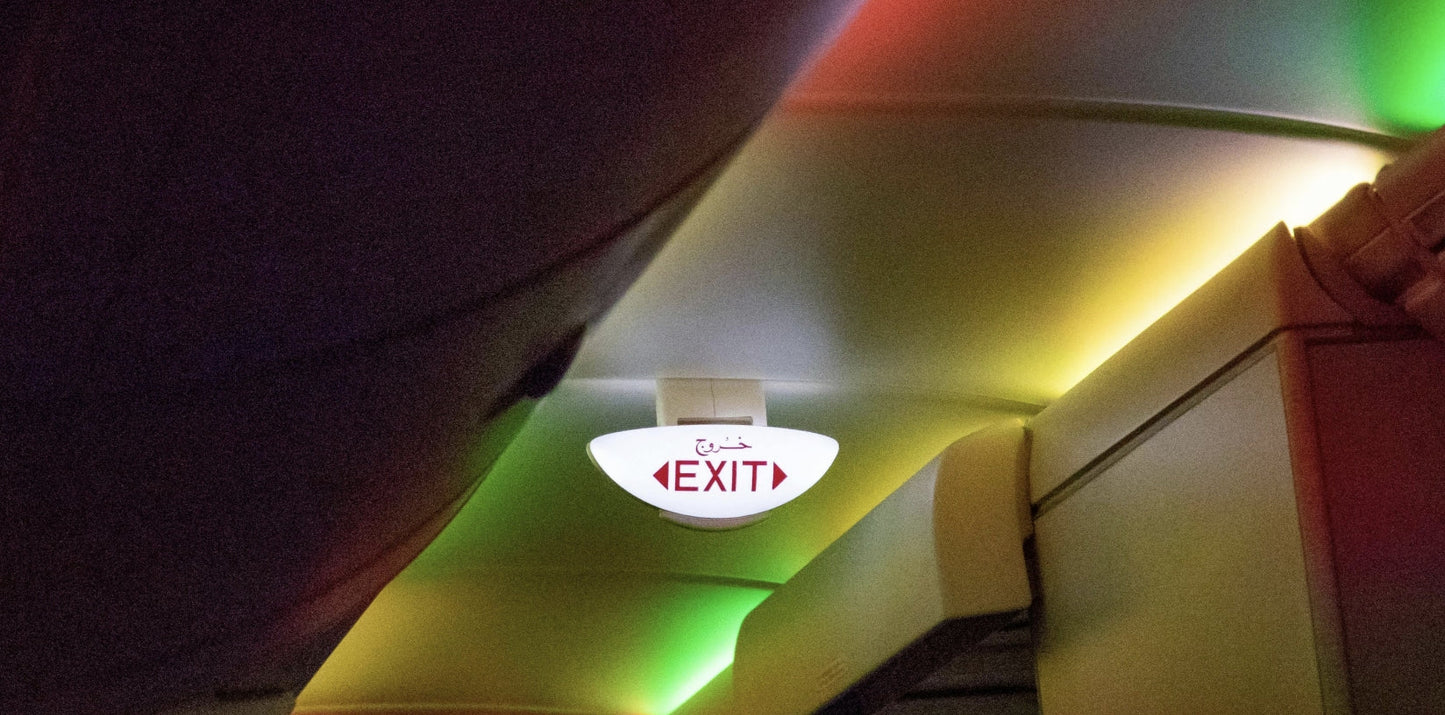
Kore Aviation - What happens if you open emergency exit on plane gathers attention because it is a rare but alarming question. Most passengers assume it is impossible. With good reason it is. Emergency exits are designed to stay locked during flight. If someone attempts to open them it can trigger serious consequences. This article looks at the physical barriers, safety risks, passenger safety design, aircraft response systems and legal outcomes if someone tries to open a door mid flight.
Why Opening Emergency Exits Mid Flight Is Nearly Impossible?
1. Pressurization Makes It Impossible
The inside of the plane is pressurized to match lower altitude pressure so you can breathe comfortably. At cruising altitude this pressure difference holds exit doors firmly in place. It would require roughly 25 000 pounds of force to move one according to aviation expert Dan Bubb. More than most people could generate.
2. Mechanical Locks Engage During Takeoffs
Once the aircraft reaches around 92 miles per hour the emergency exit automatically locks. That adds another level of safety. The door cannot be opened until the airplane slows down.
What Would Actually Happen If Someone Pulled It?
1. At High Altitude
It will not open. So trying is futile. If a door could open, the cabin would lose pressure instantly. Oxygen masks would deploy and the pilot would have to descend to a safe altitude quickly.
2. Near Landing
At lower altitude pressure difference is minimal. There was one notable incident where a passenger on an Asiana flight opened the exit around 700 feet above ground. The cabin filled with high speed wind and several passengers were treated for breathing issues. That plane landed safely.
Discover too: What Happens If You Don’t Put Your Phone in Airplane Mode?
Safety Design and Regulations
Aircraft emergency exits are equipped with safety features for emergencies not curiosity. These include plug door design, internal locks, and slide arming systems. FAA regulations implemented after the hijack era in the 1970s ensure doors cannot be opened during flight. Attempting to open one can result in fines, detainment and criminal charges.
Incidents and Legal Consequences
Attempts do happen. Cases include:
- Diverted Flights – A Ryanair flight diverted after a passenger tried to open an exit 20 minutes into flight. Police escorted the passenger off at landing.
- US and Asia Attempts – Multiple incidents on US flights where unruly passengers tried exit doors. They were restrained, flights diverted, and legal action followed.
- Asiana Door Opening – Mentioned above with no fatalities but serious safety threat.
Passengers risk major legal consequences including fines up to $35,000, criminal charges, and being placed on federal no fly lists.
Consequences of Trying to Open an Exit
- You will be physically restrained by crew or other passengers.
- The flight may be diverted or forced to land.
- You can face federal charges such as interfering with flight crew or unruly conduct. Legal penalties can include heavy fines or prison time
Read More: Why Can’t You Use Power Banks on Planes?
Why That Exit Row Seat Statement Matters
Sitting by an emergency exit gives responsibilities in a true evacuation situation. Opening an exit incorrectly can cause chaos. Airports and flight crew train for orderly egress which is undermined by unauthorized attempts.
As airline communication and cockpit noise can be noisy, having the right equipment helps. Learn about headsets that aid in safety and focus. Visit Kore Aviation’s guide to the Best Flying Headsets for Student Pilots.
FAQs: What Happens If You Open Emergency Exit on Plane
-
Can you open an emergency exit mid flight?
No. Cabin pressure and locking mechanisms prevent it. -
What if the plane is on the ground?
Then the slide will deploy once you open after unpressurized state is achieved. -
Will the plane crash if the exit opens midair?
It would cause rapid decompression. Pilots would initiate emergency descent and activate oxygen as required. -
Can passengers seated near exit open it in emergency?
Only if crew instructs to do so in emergency. Passengers must be willing and able to assist in evacuation. -
Are there legal penalties?
Yes. Federal air safety laws apply. You can be arrested fined or banned from flying. -
Why are these doors designed inward?
That ensures pressure keeps them sealed in flight and they can only open when safely on the ground or during emergency operations. -
Is sitting by exit safer?
That is debatable. It gives faster egress in evacuation but unauthorized use is dangerous. -
Will it just deploy a slide?
Only if on ground and armed. In flight slide mechanisms are locked. -
What if someone tries?
Crew and passengers will restrain them. The flight may be diverted. Legal action typically follows. -
Has it ever opened?
Yes once at very low altitude during descent and before landing. No catastrophic outcome but physical risk.
Final Thoughts
Understanding what happens if you open emergency exit on plane shows the design and regulatory safeguards in aviation. It reveals why doors stay shut and why only trained crew should operate them.
Safety starts with awareness and suitable gear. Are you starting flight training? Choose headsets that keep you focused and connected. Explore the Kore Aviation student pilot headset today.
